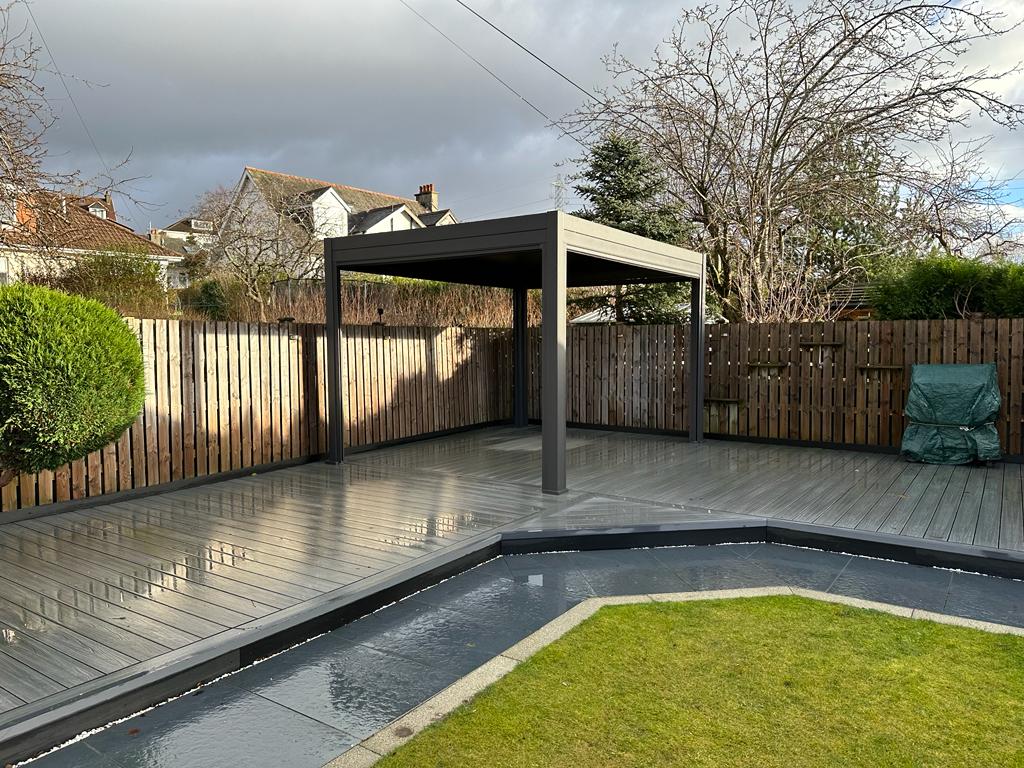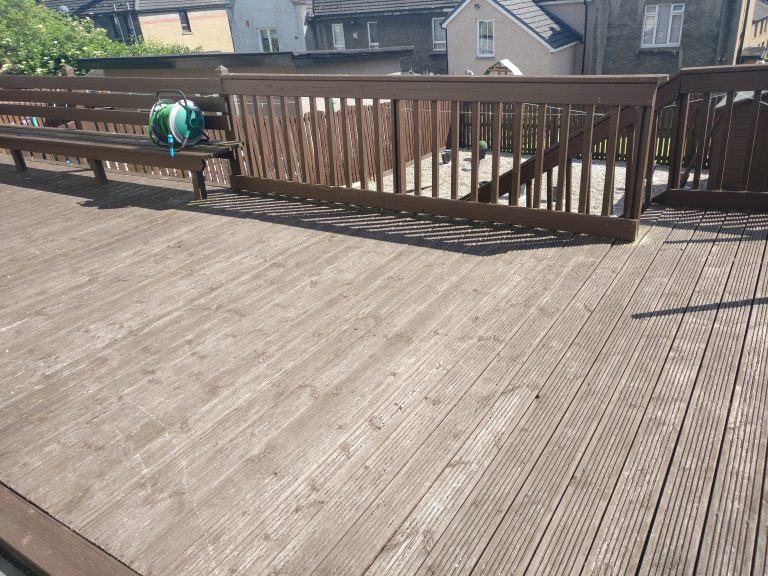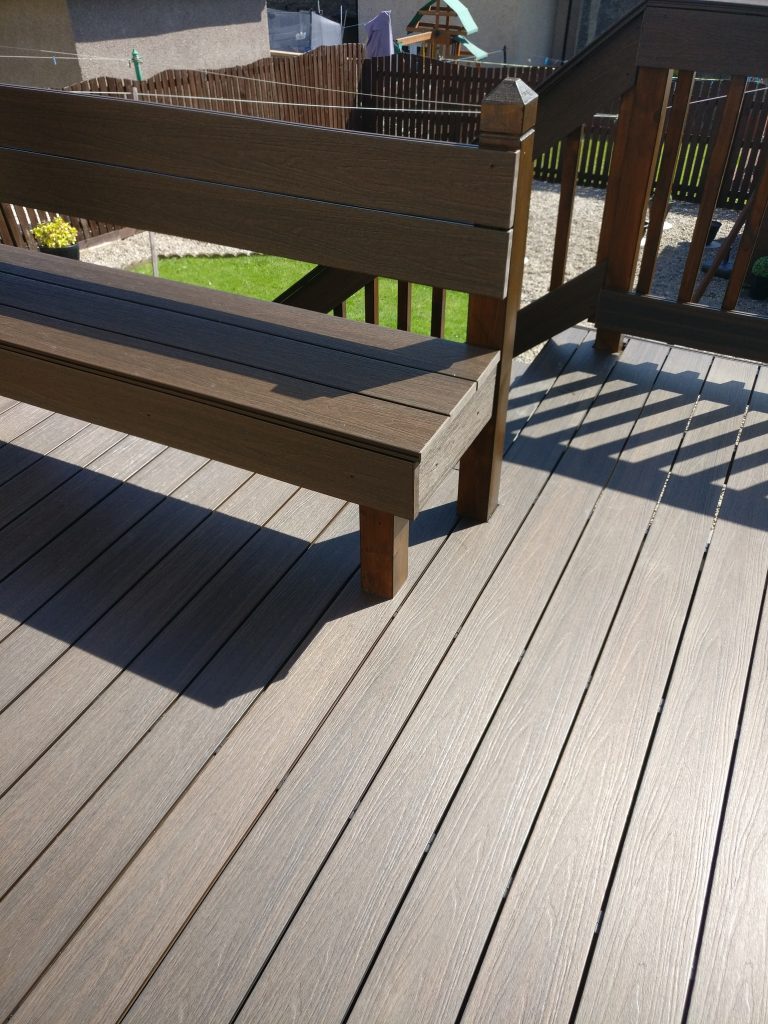Composite decking has gained popularity for its durability, low maintenance, and aesthetic appeal, making it a popular choice for outdoor living spaces. One common question that arises for homeowners and garden enthusiasts is whether it’s safe to place pots and planters directly on composite decking. In this comprehensive guide, we’ll explore the risks associated with placing pots on composite decking, how to protect your decking, alternative options for displaying plants, and which types of pots are safe to use.
Whether you’re a seasoned gardener or a new homeowner looking to enhance your outdoor space, understanding the best practices for using pots on composite decking is essential. Let’s delve into the details to ensure your decking and plants thrive harmoniously.
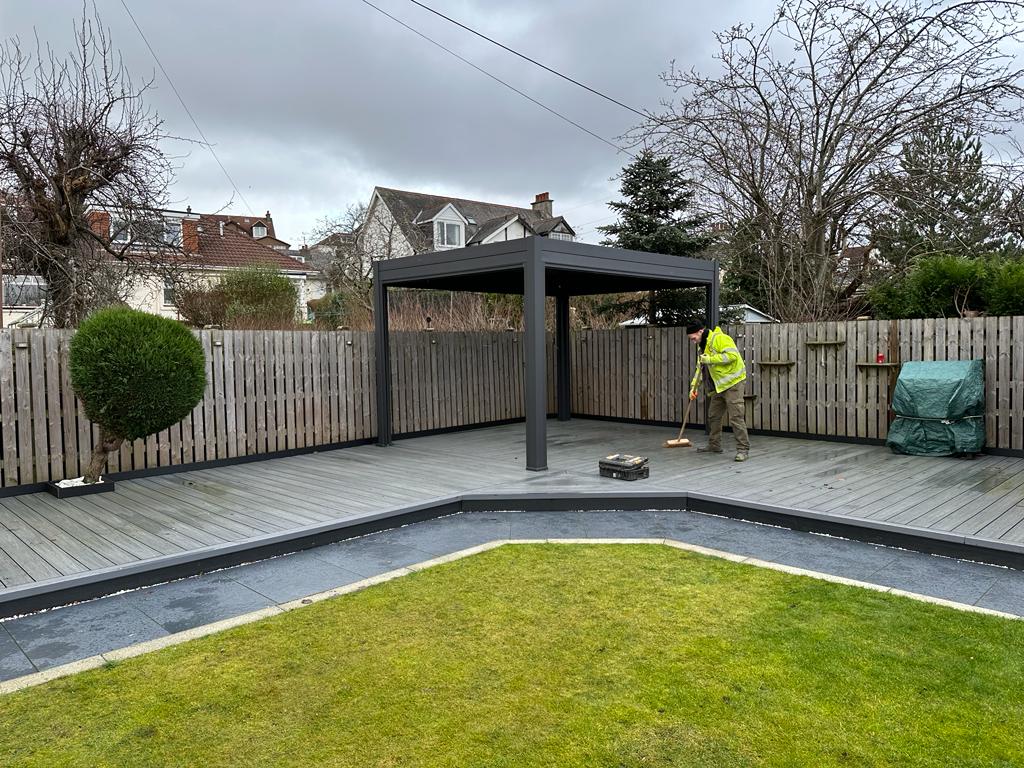
What is Composite Decking?
Composite decking is a modern alternative to traditional wood decking, offering a durable and low-maintenance solution for outdoor living spaces.
It is engineered to withstand the elements, making it highly weather-resistant and less prone to rot, warping, or splintering. This makes composite decking an ideal choice for areas with fluctuating weather conditions, as it maintains its structural integrity and aesthetic appeal over time.
Composite decking comes in a variety of colours and textures, mimicking the look of natural wood without the need for regular staining or sealing. With its longevity and ease of upkeep, composite decking simplifies deck construction and enhances the overall outdoor living experience.
Can you place plant pots on composite decking?
Many homeowners wonder about placing pots on composite decking to enhance their outdoor space with container gardening, but it’s essential to consider the weight limit and proper water drainage to protect the deck.
One key consideration when placing pots on composite decking is the weight capacity of the deck. Whilst composite decking is durable, it’s important to ensure that the weight of the pots and the soil does not exceed the recommended limit to avoid any potential damage.
Choosing suitable containers is crucial to enable proper water drainage, preventing any water accumulation that could potentially harm the deck. Opting for containers with built-in drainage holes or using saucers to catch excess water can contribute to maintaining the deck’s condition. Finding the balance between aesthetics and practicality is fundamental for a successful container gardening setup on composite decking.
What are the risks of placing pots on composite decking?
Placing pots on composite decking carries certain risks, including potential damage from excessive weight, inadequate water drainage, and improper pot material compatibility, which can impact the deck’s surface and structural integrity.
It is crucial to consider the weight of the pots and their contents, as excessive weight can cause the decking material to bend or warp over time. Proper water drainage is essential to prevent moisture buildup, which can lead to mould and mildew growth. Regular maintenance of the pots is also important to avoid scratches or stains on the decking surface.
Ensuring that the pots have proper drainage and using protective pads underneath can help mitigate these risks and prolong the life of the composite decking.
How To Protect Your Composite Decking When Using Pots?
Protecting your composite decking when using pots involves measures such as utilising pot feet, pot pads, drip trays, and elevating pots to safeguard the deck’s surface and ensure proper water drainage.
These measures not only protect the decking from water damage and staining but also help in maintaining the longevity and aesthetic appeal of the composite material. Pot feet and pads create a protective barrier between the pot and the deck, reducing the risk of trapped moisture.
Regularly inspecting the decking for any signs of water accumulation or discolouration and promptly addressing any issues can further contribute to its protection.
Use Pot Feet
Using pot feet is an effective way to distribute the weight of pots evenly on composite decking, whilst also promoting proper water drainage and minimising direct contact between the pots and the deck surface.
This weight distribution is crucial for maintaining the integrity of the decking material, preventing any potential damage or warping that could occur from concentrated pressure points. By elevating the pots slightly, pot feet allow for improved air circulation, which can help prevent mould and mildew growth on the deck surface. The elevation also aids in reducing the risk of staining or discolouration that may result from prolonged contact with moisture.
The use of pot feet offers a simple yet effective solution for preserving both the appearance and structural integrity of composite decking.
Use Pot Pads
Using pot pads helps to provide additional support for pots on composite decking, preventing direct contact between the pots and the deck, thus reducing the risk of surface damage and enhancing pot stability.
This extra layer of protection also contributes to the maintenance of the decking by minimising the potential for moisture build-up under the pots, which can lead to mould and mildew growth. Pot pads assist in evenly distributing the weight of the pots, reducing the risk of indentations and marks on the decking. By ensuring proper airflow and drainage, pot pads help preserve the integrity and longevity of composite decking, making them an essential accessory for any outdoor space adorned with potted plants.
Use a Drip Tray
Utilising a drip tray underneath pots on composite decking aids in managing water drainage and minimising the potential for moisture-related issues, contributing to pot maintenance and deck protection. This simple addition serves as a barrier between the pot and the deck, preventing water from pooling and causing damage. By retaining excess water that drains from the pots, the drip tray helps to preserve the integrity of the composite decking. This, in turn, extends the lifespan of the deck and reduces the need for frequent maintenance. Using a drip tray also prevents staining and discolouration of the deck surface, ensuring a clean and attractive outdoor space.
Raise pots off the decking
Elevating pots off the decking surface through raised platforms or stands is an effective strategy to promote air circulation, prevent moisture accumulation, and safeguard the deck from potential damage caused by pots. By elevating the pots, you ensure better stability, reducing the risk of them toppling over in strong winds or accidental knocks. This not only minimises the need for frequent adjustments but also prevents scratches and stains on the composite decking, extending its lifespan.
Lifting pots off the surface enhances maintenance by facilitating easy cleaning underneath and prevents the growth of mould or mildew, contributing to a healthier outdoor environment.
What other options are there for placing pots on composite decking?
If placing pots directly on composite decking presents concerns, alternative options such as using hanging baskets, creating raised garden beds, or opting for planters with wheels can provide innovative and versatile solutions for enhancing outdoor spaces.
Hanging baskets can add vertical interest and save space, whilst raised garden beds offer the opportunity to customise soil and drainage for specific plant needs. Wheeled planters allow for easy mobility, enabling flexibility in design and maintenance. Each alternative option presents unique benefits and considerations, catering to different preferences and practical requirements for creating an inviting and functional outdoor environment.
Use Hanging Baskets
Incorporating hanging baskets offers a decorative and space-efficient solution for adding greenery to outdoor living areas, enabling creative pot arrangements while optimising deck space and landscaping possibilities.
These versatile baskets provide an opportunity to elevate the aesthetics of composite decking while making efficient use of limited space. By suspending planters, they free up valuable deck surface for other functions, allowing homeowners to fully maximise the potential of their outdoor living space.
The hanging baskets can be positioned strategically to create visual interest and focal points, transforming the deck into a vibrant, inviting extension of the home. This simple addition not only enhances the overall outdoor decor but also adds a touch of nature that can promote relaxation and well-being.
Create A Raised Garden Bed
Establishing a raised garden bed presents an excellent alternative to traditional pot placement on composite decking, promoting efficient water drainage, tailored planters, and the opportunity for diverse gardening activities within designated deck areas.
The raised garden bed not only allows for better water drainage, reducing the risk of water damage to the composite decking, but also offers a customisable space for different plant varieties. By utilising the available deck area, gardeners can make the most of limited outdoor space, bringing nature closer and enhancing the aesthetics of their deck.
The elevated bed also provides easier accessibility and maintenance, making it an attractive option for gardening enthusiasts.
Use Planters With Wheels
Opting for planters with wheels offers mobility and flexibility in deck layout design, allowing convenient pot positioning, versatile outdoor decor, and enhanced aesthetics whilst facilitating deck maintenance and safety measures.
The ability to easily move planters across composite decking makes rearranging and cleaning a doddle. With the option to rearrange the layout of plants, sunlight exposure for each plant can be maximised, promoting their healthy growth. The presence of wheels prevents dragging heavy pots, reducing the risk of scuffing or damaging the deck surface. This convenience also allows for efficient rearrangement when hosting outdoor gatherings and events, ensuring a visually appealing and safe environment for all.
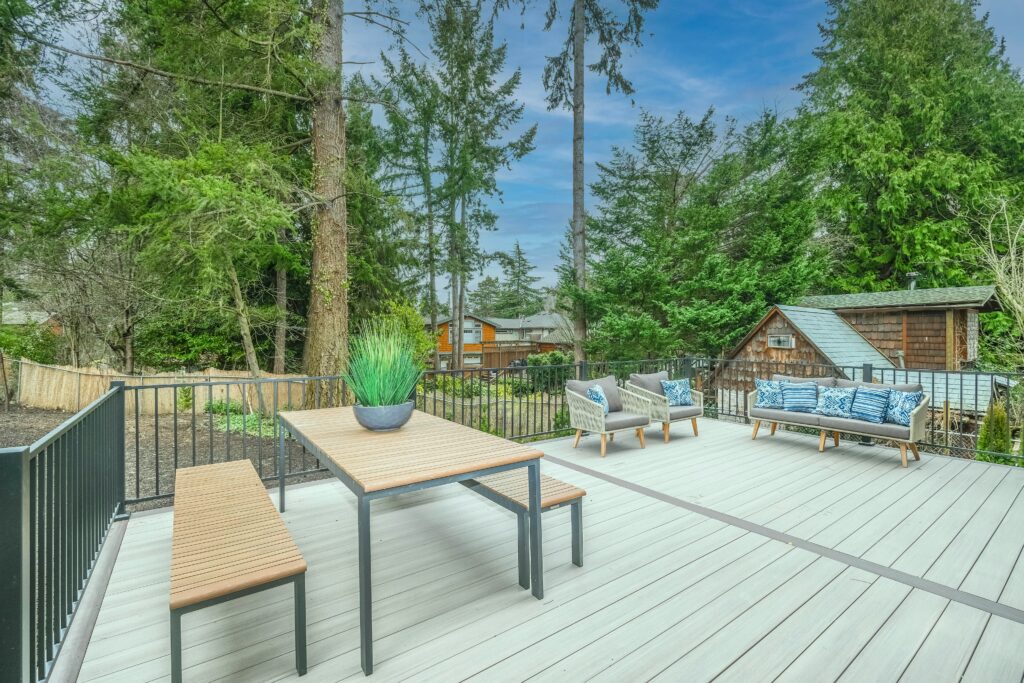
What types of pots are safe to use on composite decking?
Several types of pots are deemed safe for use on composite decking, including:
- terracotta
- plastic
- resin
- fibreglass
- concrete
- metal
- wooden pots, especially when accompanied by appropriate accessories such as saucers and feet to ensure water drainage and material compatibility.
It’s essential to consider the weight of the pots, as heavy ones like concrete or metal might require additional support to prevent any damage to the decking.
When selecting pots, the aesthetics play a crucial role in enhancing the overall visual appeal of the outdoor space, and the material choice should complement the decking’s colour and texture.
Ensuring proper water drainage and material compatibility not only safeguards the decking but also contributes to the longevity and structural integrity of the outdoor area.
Terracotta Pots
Terracotta pots are a popular and versatile choice for container gardening on composite decking, offering excellent water retention, insulation, weather resilience, and aesthetic appeal, making them a preferred option for many garden enthusiasts.
Their porous nature helps regulate moisture levels, reducing the risk of overwatering and root rot. The material also provides insulation for plant roots, protecting them from temperature fluctuations. The earthy tones and textures of terracotta pots complement the natural look of composite decking, enhancing the overall visual appeal of the garden space.
Their durability and ability to withstand varying weather conditions make them a reliable choice, ensuring that your plants thrive in a conducive environment.
Plastic Pots
Plastic pots are lightweight, durable, and versatile, making them a practical choice for container gardening on composite decking, with features such as:
- Varied sizes
- Efficient water drainage
- Material compatibility
- Insulation
- Aesthetic options
They offer the flexibility of being easily rearranged, reducing strain when moving them around to optimise sunlight exposure. The efficient water drainage prevents waterlogging, protecting the composite decking from potential damage. Their material compatibility ensures that they won’t cause discolouration or degradation to the decking, maintaining its appearance. Plastic pots come in an array of colours and designs, adding a vibrant touch to the outdoor space while integrating seamlessly with the decking’s aesthetics.
Resin Pots
Resin pots offer a blend of durability, weight versatility, adequate support, efficient water drainage, material compatibility, aesthetic appeal and low maintenance requirements, making them a reliable choice for container gardening on composite decking.
Their lightweight nature makes them easy to move around, and they are less likely to cause damage to the composite decking, unlike heavier alternatives. The efficient water drainage system in resin pots helps avoid water pooling, preventing potential damage to the decking. Resin pots are compatible with composite decking materials, ensuring no adverse chemical reactions that could harm the surface.
The aesthetic appeal of resin pots adds a stylish touch to the deck, offering a wide range of colours and designs to complement different styles. Their low maintenance requirements save time and effort, allowing for a hassle-free gardening experience.
Fibreglass Pots
Fibreglass pots combine lightweight design, stability, material versatility, efficient water drainage, insulation, and aesthetic appeal, making them an excellent choice for container gardening on composite decking, catering to various potting needs.
Their stability ensures that they won’t easily tip over, providing a secure base for your plants. Their efficient water drainage system prevents waterlogging, promoting healthy root development and preventing damage to the composite decking. The material versatility of fibreglass allows for a wide range of designs and colours, seamlessly blending into any outdoor aesthetic. Fibreglass pots offer insulation, protecting the plants’ roots from extreme temperatures and promoting healthier growth. These advantages make fibreglass pots a top choice for container gardening on composite decking.
Concrete Pots
Concrete pots offer robust support, material compatibility, water retention, diverse size options, aesthetic appeal, and low maintenance requirements, making them a reliable choice for container gardening on composite decking, especially for larger plants.
Their sturdy construction provides stability, ensuring that the pots securely hold the weight of the plants without damaging the decking. Concrete’s durability makes it suitable for outdoor use, and its compatibility with composite decking ensures that it won’t cause any staining or discolouration. Concrete pots can help regulate soil moisture, preventing over-drying commonly associated with container gardening.
Their versatile designs and finishes contribute to the overall aesthetics, enhancing the outdoor space. Their low maintenance needs make them a long-lasting and practical option for creating beautiful garden arrangements on composite decking.
Metal Pots
Metal pots offer robust construction, stability, efficient water drainage, material compatibility, aesthetic appeal, and low maintenance requirements, making them a suitable choice for container gardening on composite decking, especially for contemporary outdoor designs.
Their robust construction ensures that they can withstand the weight of the soil and plants without warping or cracking, providing a reliable foundation without compromising the decking’s integrity. The efficient water drainage prevents water pooling, reducing the risk of damaging the composite decking.
With their material compatibility, metal pots complement the modern look of composite decking, enhancing the overall aesthetics of the outdoor space. Their low maintenance requirements make them a practical and long-lasting solution for creating beautiful container gardens on composite decking.
Wooden Plant Pots With a Drip Tray
Wood planters, when accompanied by a drip tray, offer natural aesthetics, material compatibility, effective water drainage, insulation, maintenance, and stability, making them a harmonious and safe choice for container gardening on composite decking.
The use of wood planters with a drip tray on composite decking helps in preserving the condition of the decking material by preventing water damage and discolouration. This combination allows for proper aeration of the soil, reducing the risk of overwatering and root rot. The natural characteristics of wood complement the outdoor environment, creating a seamless and inviting ambience for plants to thrive.
The maintenance of wood planters and drip trays is straightforward, promoting longevity and sustainability in container gardening practices.

